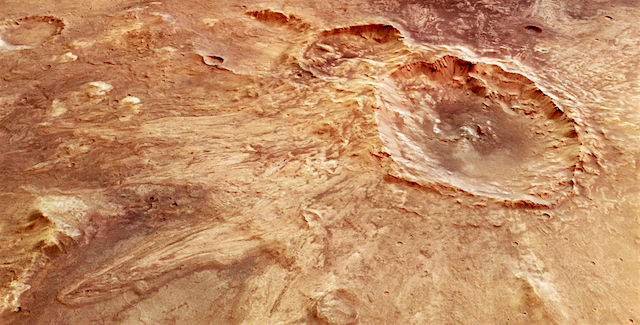 An impactor smashing into an ice-rich surface gave rise to the complex flow features around this ancient crater on Mars.
An impactor smashing into an ice-rich surface gave rise to the complex flow features around this ancient crater on Mars.
Impacts of comets and asteroids have shaped the surfaces of rocky planets and moons over the Solar System’s 4.6 billion year history, and can reveal environmental conditions at the time of their formation.
During an impact, the energy transferred to the ground goes into melting and vapourising the impactor and parts of the surface, as well as excavating vast amounts of material from the ground, throwing it out onto the surrounding terrain as a blanket of debris.
The characteristics of the ejected material can provide clues as to the conditions of the planet’s surface and its general environment.
The 32 km-wide crater seen centre-stage in this image clearly formed at a time when water or ice was present near the surface. The energy of the impact heated up the water-rich sub-surface, allowing it to flow more easily, leading to the ‘fluidised’ nature of the ejecta blanket…. [More at link]








